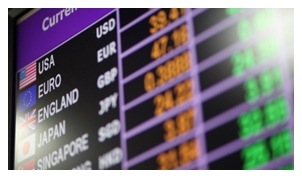
Talking Points:
-Low volatility followed by high volatility.
-Considerable risk factors, but timing is key.
-Trend is your friend if history repeats itself.
History tells us that (1) markets do not like uncertainty and (2) periods of very low volatility are usually followed by periods of very high volatility. Considering where global markets stand at this very moment, it seems appropriate to discuss those two very points that continue to prove correct time and time again.
In the foreign exchange market, we are currently seeing volatility fall to levels not seen since lows in 2007 and 1996. Although there is nothing wrong with extended periods of low volatility and markets can trend in a low volatile environment for years, such an outcome seems increasingly more unlikely under the circumstances. It is not only that the risks surrounding global markets are in large numbers (they are), but rather because those risks are spread across the globe, across asset classes and are somewhat systematic in nature. The saying goes that when the U.S. sneezes the world catches a cold, but does it matter who sneezes when the world’s immune system is low with the largest amounts of interconnectedness in history?
Although ‘post-crisis’ is how market participants often describe this period of time, it is important to note that the global financial crisis was not truly ‘global’ in nature. If anything, Chinese stimulus measures in the wake of US housing market developments in 2008/2009 likely helped the world avoid a great depression, but those measures also fueled an overextended environment in China’s own property sector as well as in emerging markets dependent on the commodity demand boom. As risks of a Chinese slowdown in the economy and property sector develop, combined with geopolitical risk and a probable QE3 ending in 2014, what is to say volatility does not return and quickly?
It is not as though risks developing, be them in the shadows of residential complexes in China or on the border of Eastern Ukraine, are hidden to market participants. They are widely known, but not necessarily priced in as their end results are up in the air. These are the ‘known-unknown’ risk factors, if you will, of the current marketplace. This environment can lead to a complacent drift higher in Forex risk as market participant seek to hold carry in a low volatile environment, but it is not sustainable.
If there is one thing that has held true among those asset classes and Forex pairs that have moved, it is that the trend has been your friend. With that said, it may be useful to take note of the similarities between price action year-to-date and with 2010.
YTD vs. 2010: Volatility Index
YTD vs. 2010: US 10yr Yields
YTD vs. 2010: S&P 500
YTD vs. 2010: USDJPY
YTD vs. 2010: USDJPY 6M Options Volatility (ATM)
YTD vs. 5yr Average: Emerging Market ETF
Gregory Marks, DailyFX Research Team
Keep up to date on event risk with the DailyFX Calendar.
How does a Currency War affect your FX trading?
DailyFX provides forex news and technical analysis on the trends that influence the global currency markets.Learn forex trading with a free practice account and trading charts from FXCM.
Source: Daily fx